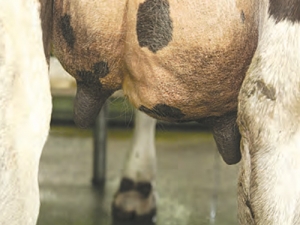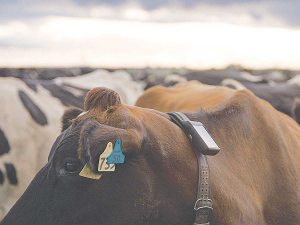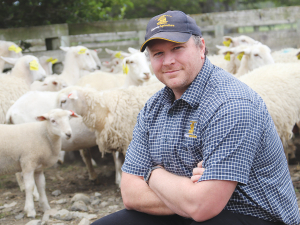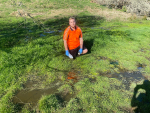Treating dry cows with teat sealant alone may be just as effective as the use of teat sealant and antibiotic dry cow treatment (DCT).
A DairyNZ and veterinarian study of cows in wintering systems in Southland showed that cows treated with teat sealant had the same level of protection against infection at calving and early milking. However, the study, reported to the New Zealand Milk Quality Conference says bigger, multi-herd studies were needed to provide better predictors of the effectiveness of different strategies.
"There is growing pressure to reduce the use of antimicrobials in agriculture, due to the emergence of antimicrobial resistance among human and animal pathogens," the report to the conference says. The event was part of the NZ Veterinary Association conference in Hamilton.
"Improved stewardship of animals, and clear guidelines that reduce the reliance on use of antimicrobials, are key steps in addressing these concerns.
"In dairy, up to 85% of the antimicrobials used onfarm are associated with treatment and prevention of mastitis. From DairyNZ farmer surveys we estimate that at least 85% of dairy cows in NZ are protected at dry-off, with about 50-60% of farmers choosing to treat all cows with antibiotic dry cow treatment (DCT) and 20% using DCT plus internal teat sealant (ITS).
"Internal teat sealants have been available as an effective non-antimicrobial for protecting low somatic cell count (SCC) cows since the late 1990s but survey data suggest that fewer than 15% of farmers choose to protect cows with ITS as a single treatment."
The report says that with the recent decline in milk price, farmers are more circumspect about animal health costs at dry-off, and many are revisiting the value of protecting low SCC cows.
System-specific data on the true risks of leaving cows unprotected in different wintering systems would help vets and farmers make more cost-effective choices. During the winter of 2015, nil treatment and three interventions at dry-off were tested for their ability to prevent mastitis at calving on two well-recorded farms in Southland.
The trial was run May-November 2015 on two farms in Southland. Herd 1, near Winton, housed cows in a free-stall wintering barn with water-cushioned, rubber mats as bedding and fed predominantly grass silage and straw; Herd 2, near Invercargill, wintered cows on the farm, on fodder beet supplemented with baled grass silage and hay.
All cows confirmed to be pregnant and free of clinical mastitis in the last two weeks prior to dry-off were enrolled.
Results
A total of 929 cows were enrolled in the study and received treatments at dry-off. Of these, 864 cows calved and 861 were sampled at two intervals.
In both herds, cows left untreated at dry-off had more clinical mastitis in the dry period and after calving, a higher rate of new intra-mammary infections at calving, and a higher SCC in the subsequent lactation.
The level of clinical mastitis in the dry period among untreated cows was lower than expected by the farm managers, but only 10% of eligible cows in each herd were exposed. Both farm managers commented that having a greater proportion of the herd unprotected would have created a more noticeable and unfavourable result.
Compared to cows that received no treatment, the interventions achieved a protective effect ranging from 70 to 100% in the dry period, with a decline after calving (50-90% in Herd 1 and 50-62% for Herd 2). These effects were similar to previous studies.
The report concludes that among cows that got no protection at dry-off, there were almost three times as many cases of clinical mastitis, more infections present at calving, and a higher SCC at the first two herd tests in the subsequent lactation.
For cows receiving teat sealant alone, the level of protection was almost the same as a combination of dry cow and teat sealant, and for some measures was better than dry cow treatment alone.
"However it is acknowledged that the size of the study did not have sufficient power to consistently distinguish between the different interventions," the report concluded.
"Multi-herd studies are required to determine whether these factors can be modelled to provide better predictors of the effectiveness of different strategies. Some herds may gain no additional benefit from the combined approach; others may benefit more from teat sealant alone."



















